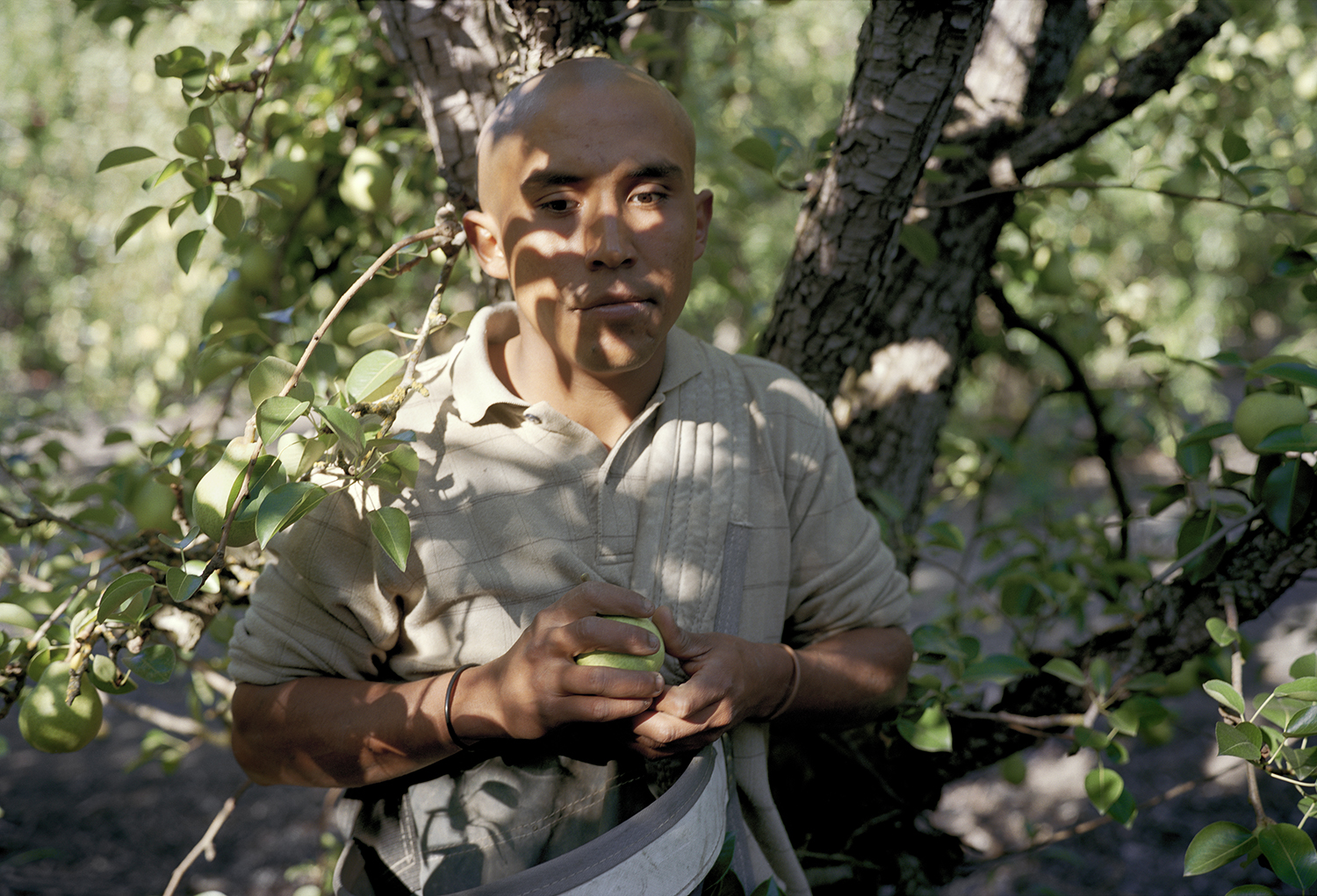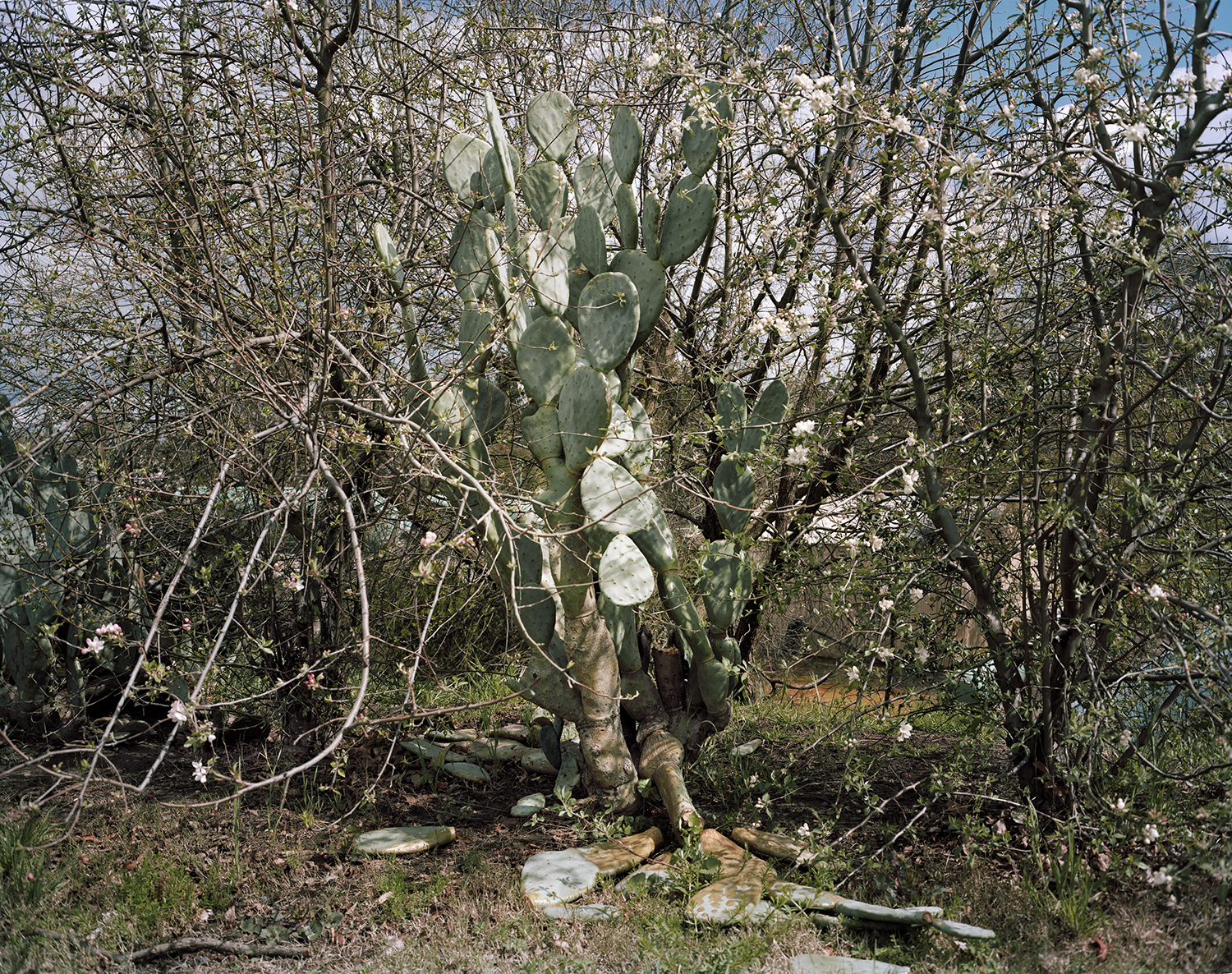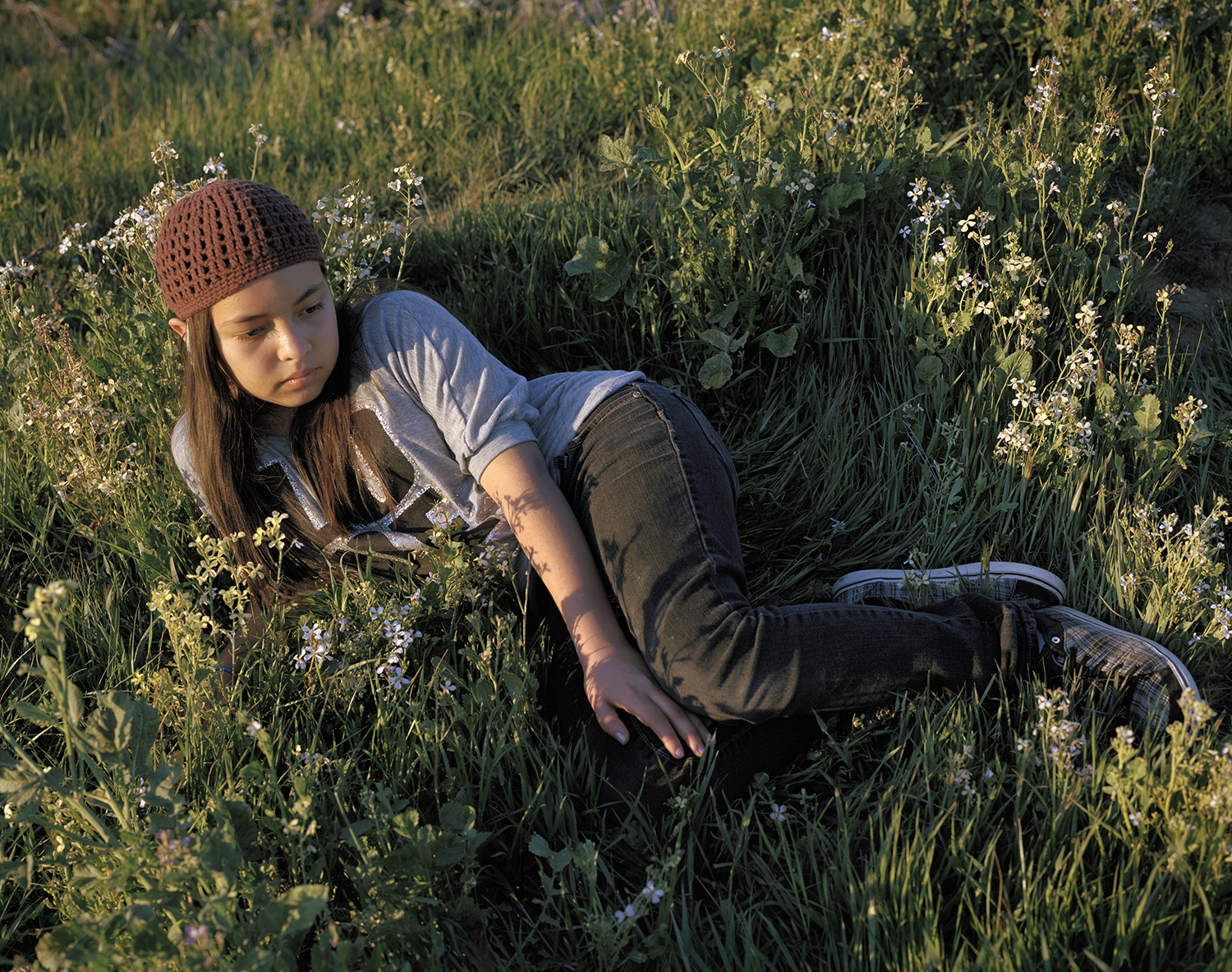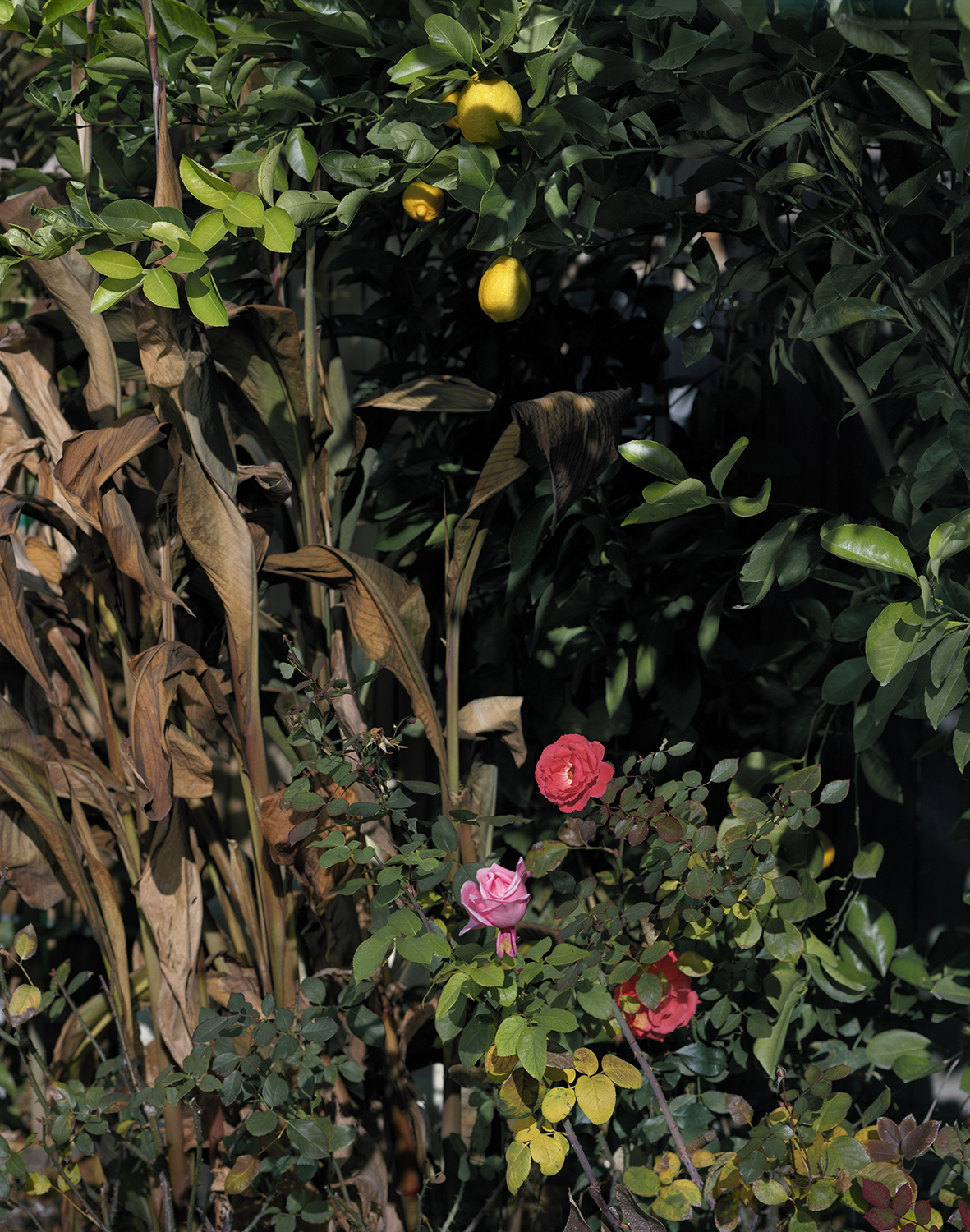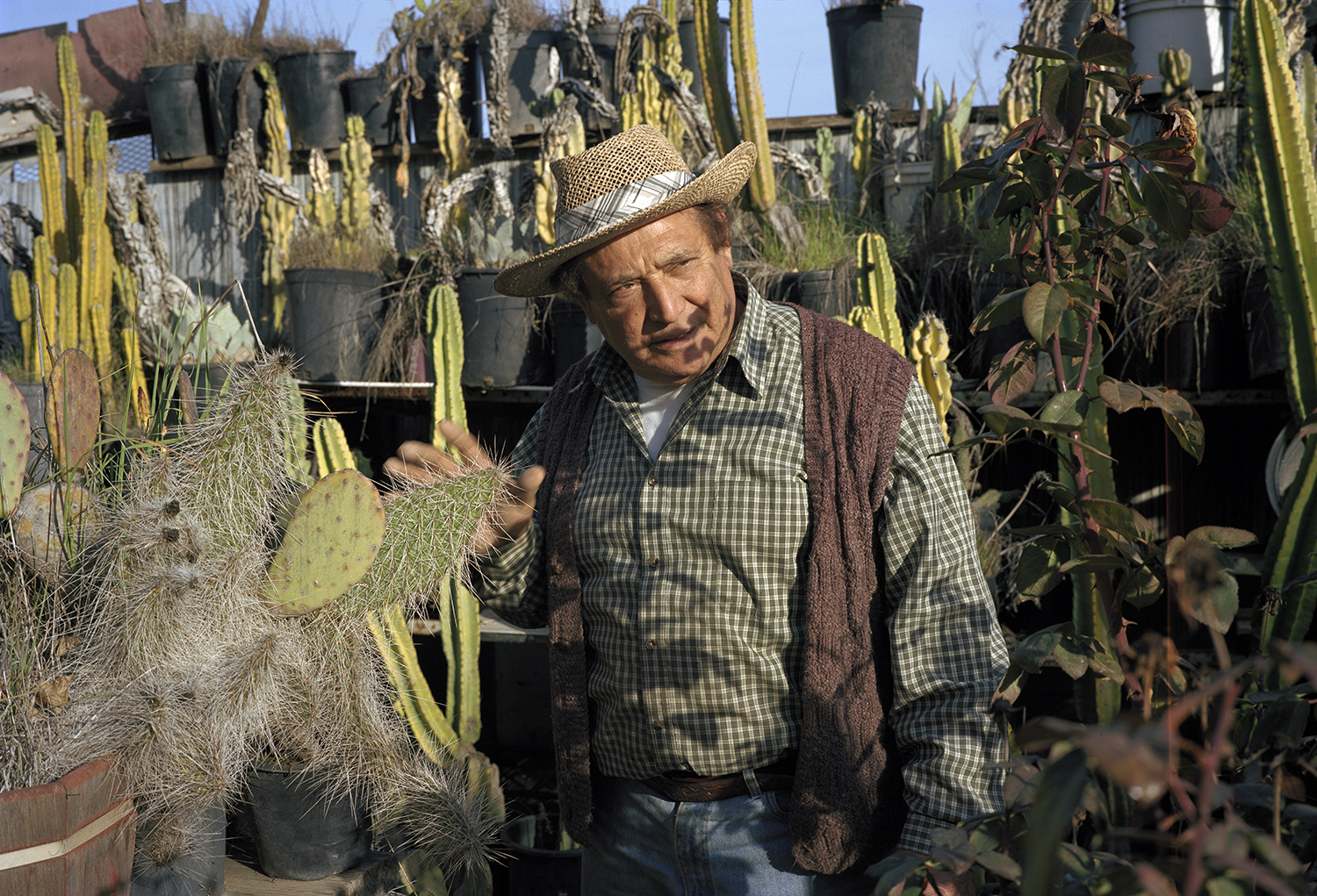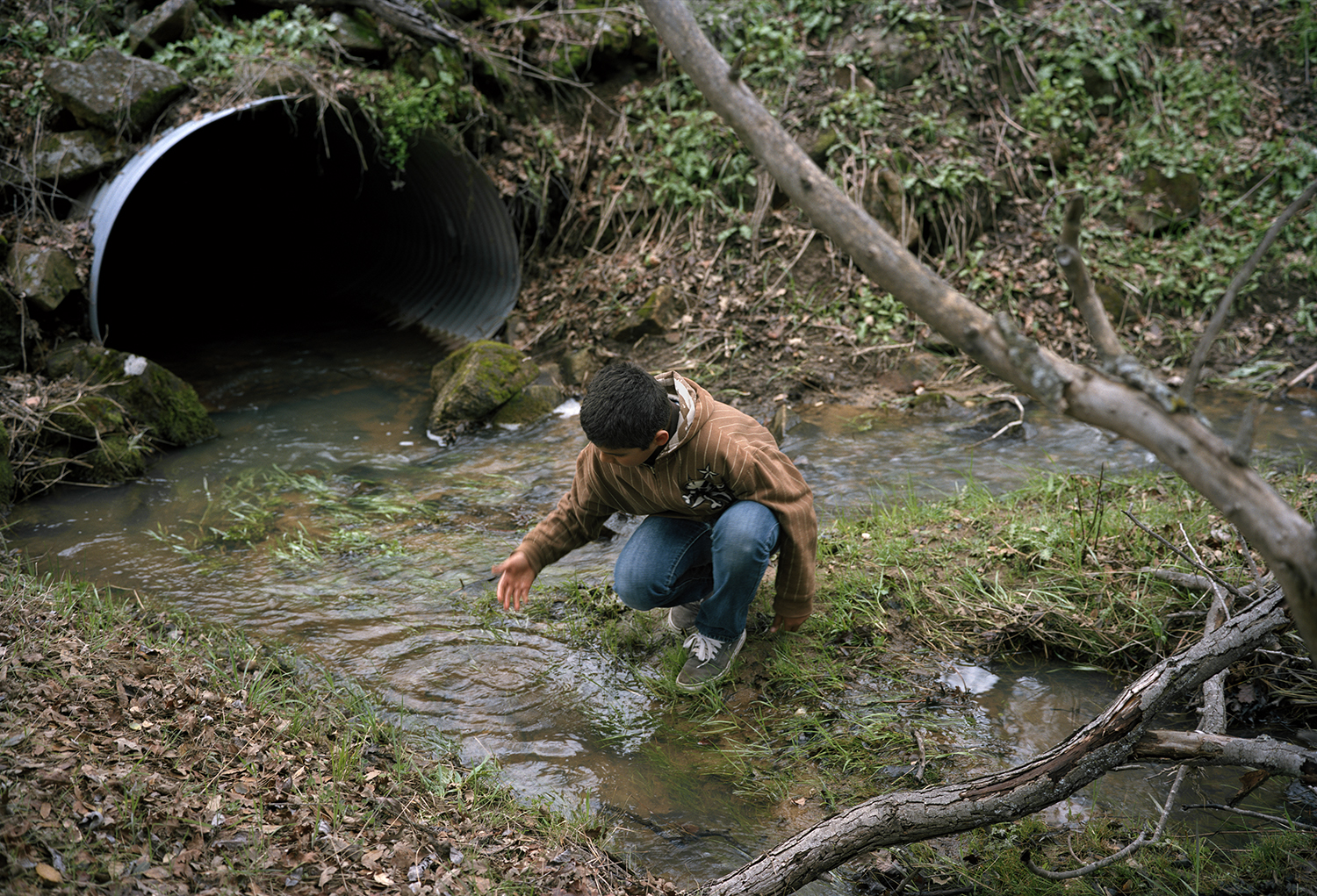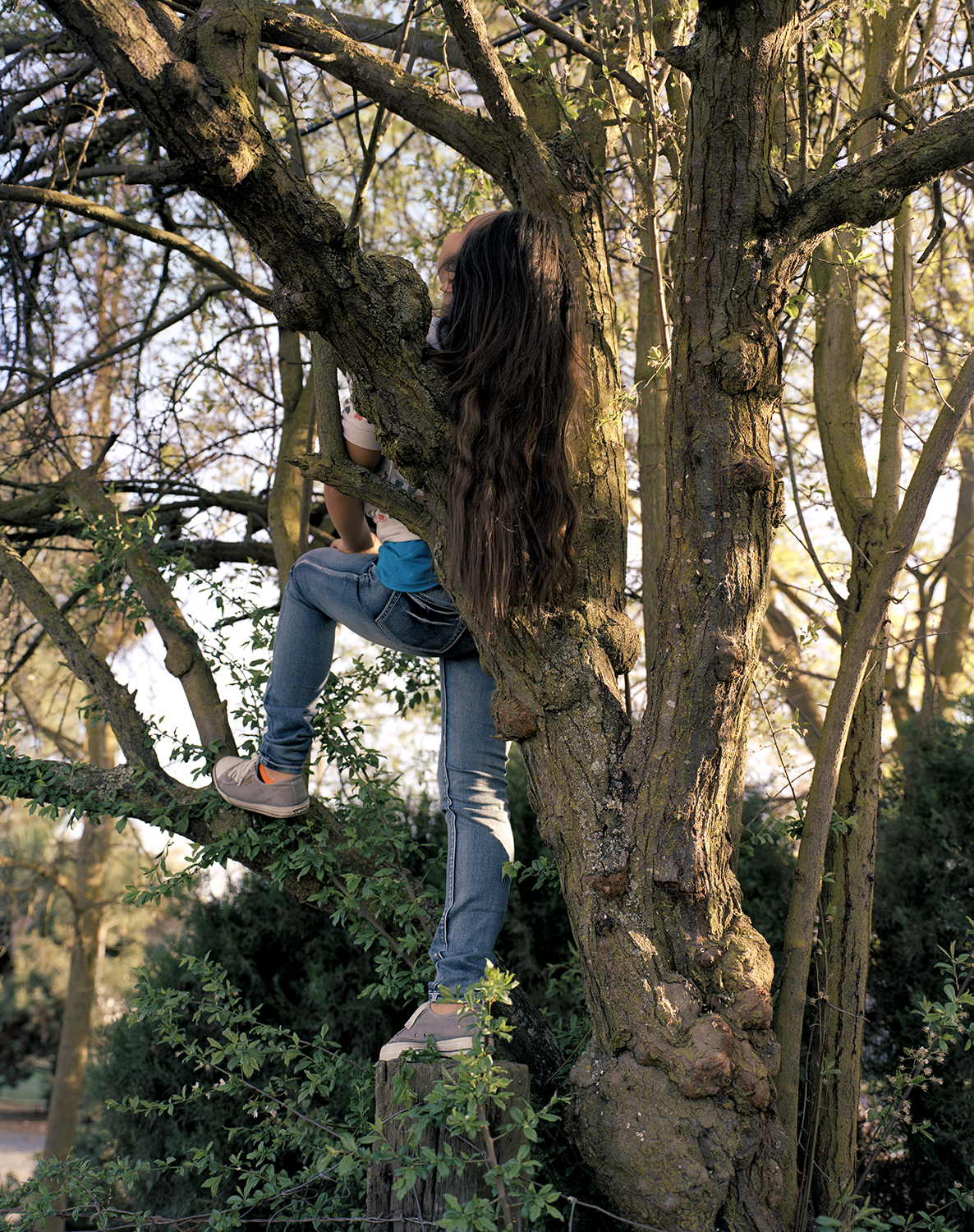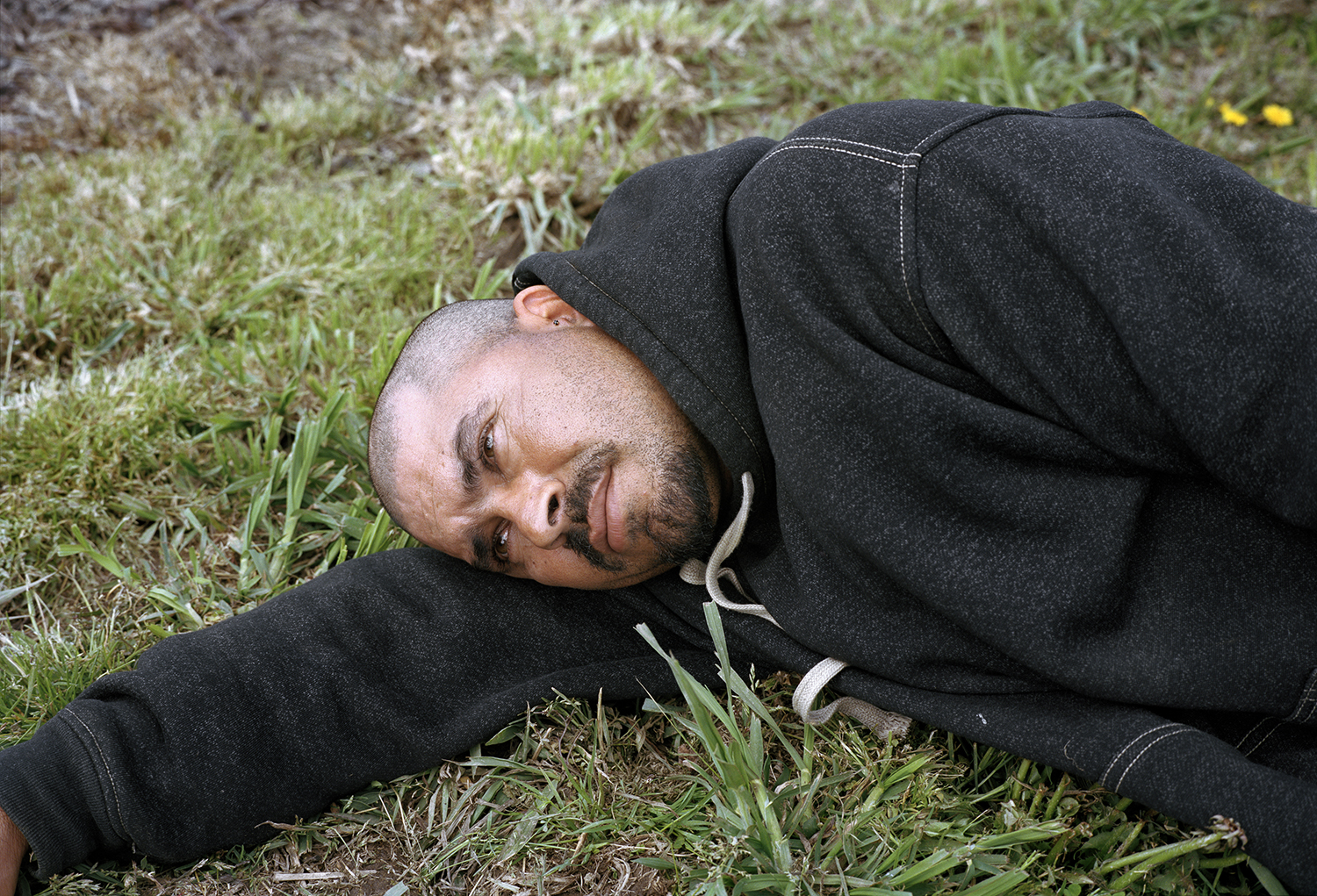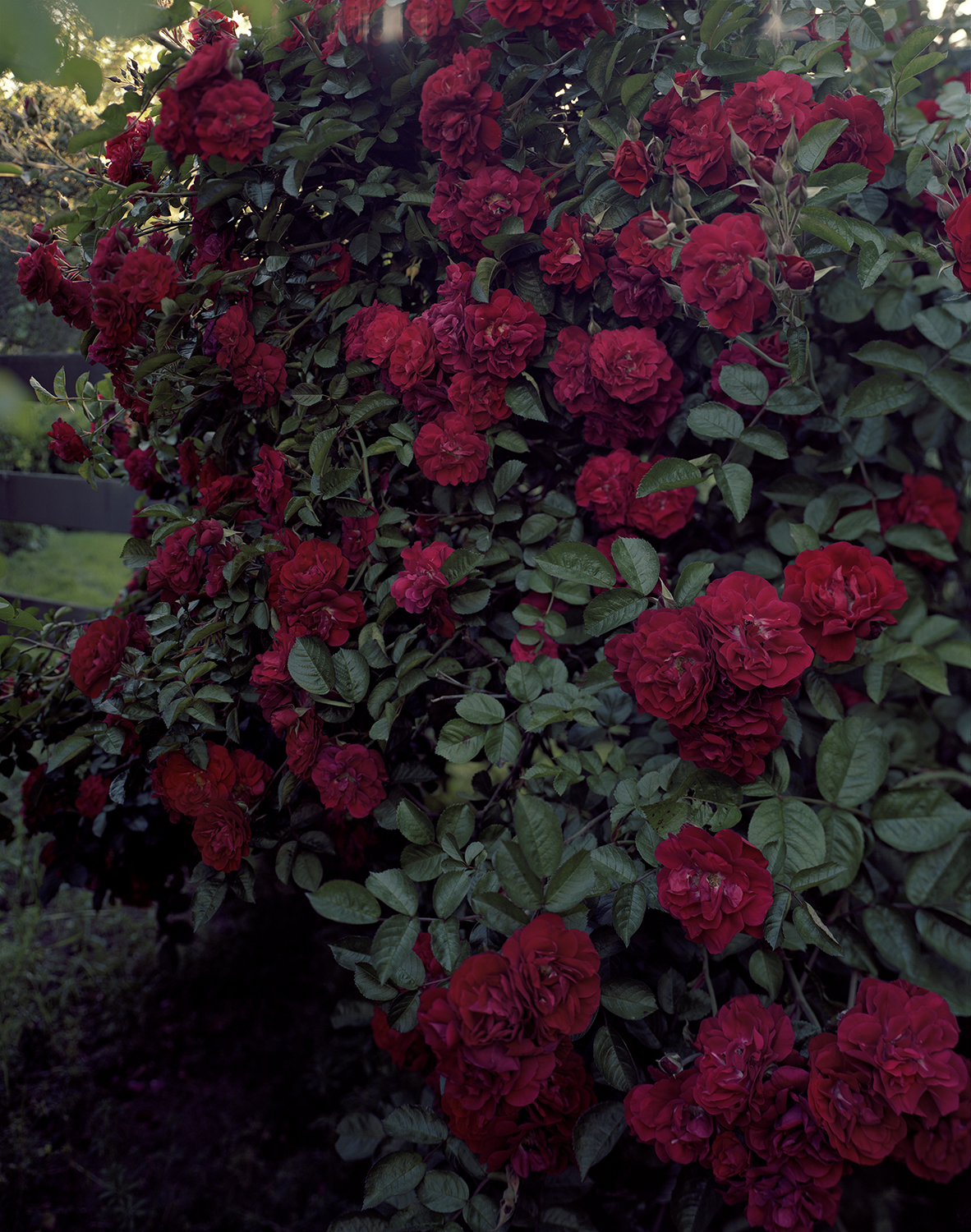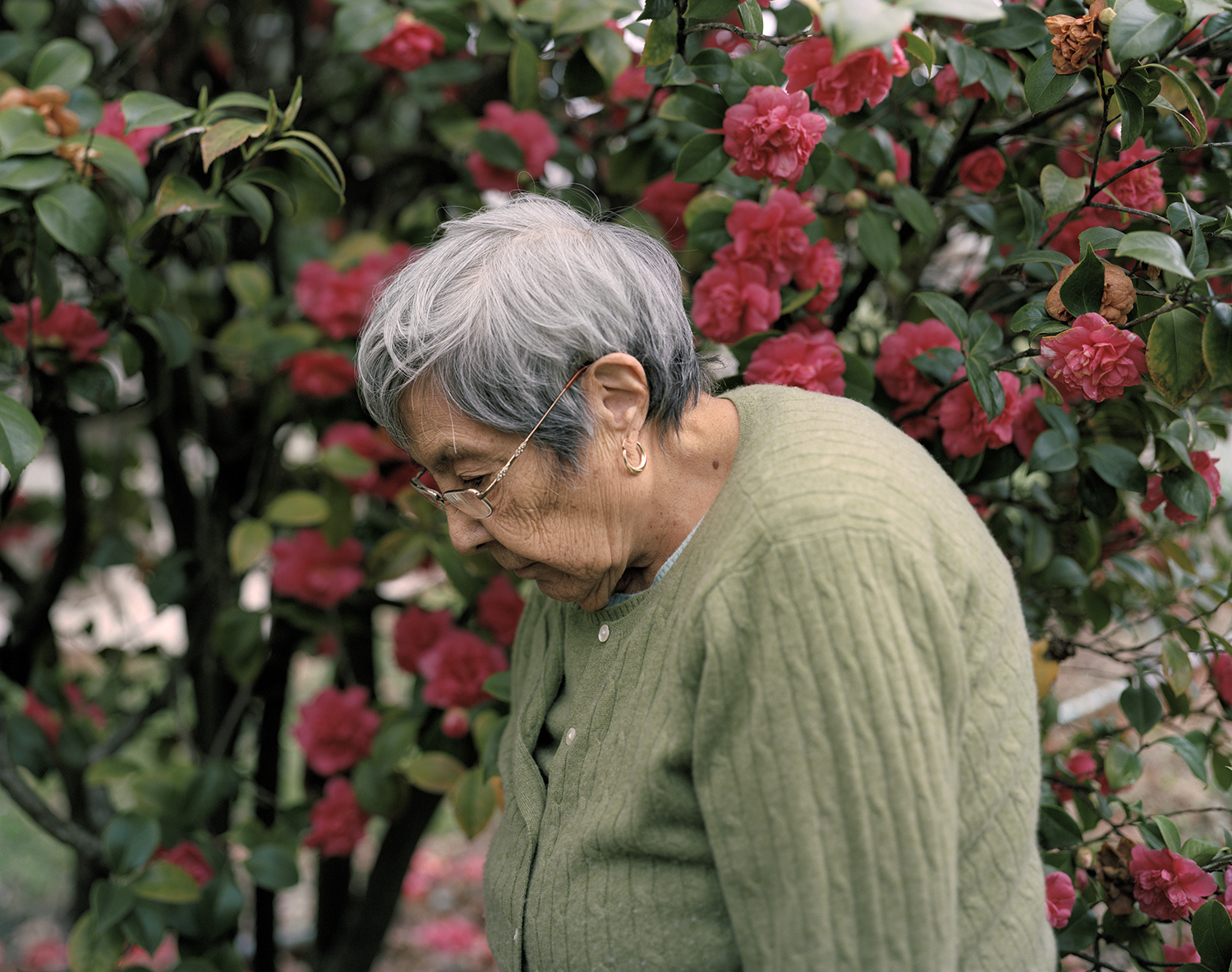Q&A: Kathya Landeros
By Zora J Murff | Published August 4th, 2016
Kathya Landeros is a photographer and educator who lives and works from her hometown of Sacramento, California. Her photographic work is informed by her bi-cultural upbringing and often explores Mexican-American identity and the immigrant experience. For over a decade, she has worked on long-term personal projects documenting Latino communities throughout California’s northern Central Valley and other parts of the American West. The recipient of a Fulbright Fellowship, she has also photographed and lived in Mexico. Prior to earning a graduate degree in photography from Massachusetts College of Art and Design, she received an undergraduate degree in English literature and Hispanic studies from Vassar College.
This week, I had the pleasure of speaking with Kathya about her work Verdant Land and diversity in MFA programs and the field of photography. We also touch on photography as a corrective force and how it relates to the depiction (or erasure) of Latino communities in the narrative of The American West.
Zora J Murff: Hi Kathya, I've been excited about doing this interview since the first time I saw your work. Let's start by getting to know you a little bit better.
Kathya Landeros: I am a first generation immigrant born in Northern California to Mexican parents. Although I represent the first generation of my family born and rooted to the United States, my ancestral ties to this country go as far back as to my second great-grandfather who worked in the mines of Arizona. It’s an interesting familial history of migration that dates back several generations. I had a very bicultural upbringing, with a connection to both countries and their corresponding customs. Spanish was spoken at home, and my sisters and I spent time in Mexico where my great grandmother returned to live out her last years of life.
When I was 17, I moved back East to college. I studied English literature and Hispanic Studies at Vassar College in Poughkeepsie, New York. It was there that I discovered and fell in love with photography. It took a few years for me to find the courage to really pursue my interest in it, however. Underlying this was the fear of not being able to financially support myself. That still exists. It meant transitioning from a 9-5 job by taking on odd jobs here and there. But, at the least, they were jobs that would allow me some free time to photograph and put film in my camera. Throughout this, I’ve had some fortunate breaks. Those include a Fulbright fellowship to Mexico in photography. I was able to earn an MFA in photography from the Massachusetts College of Art and Design (Mass Art) in Boston. A year later, I received an artist residency to continue my work on Verdant Land at the Center for Photography at Woodstock, and then a couple of years later I landed at the Rayko Photo Center in San Francisco as an artist in residence. Between all of this, I spent some time in China where I met my partner, a fellow photographer, whom I later married. Currently, we are living in my hometown in the Central Valley where I am teaching photography.
ZJM: Can you tell us about your photography and some of your influences?
KL: Despite how much time I have spent back East, I keep returning to the West Coast, specifically to the Sacramento Valley, to photograph the place I love and know. Much of my work is inspired by my upbringing as an immigrant and my family’s history of immigration. As I mentioned before, within my family narrative there are many generations of hardworking kinfolk who emigrated from Mexico. There are stories of my second great grandfather working in Arizona’s mines, anecdotes of my grandfather who came to this country as a Bracero (a U.S. sanctioned work program), and then there are accounts of my grandmother and parents coming to California and working as farmhands. As a Fulbright Fellow, I returned to Mexico to photograph in the geographic area with the highest rates of historic migration to the States, and the place where my own family emigrated. The communities here have ties to both countries that also date generations back.
Looking at this history has been crucial to my work in understanding the common interests and shared experiences between the two countries and its people, and it has allowed me to think beyond the divisive descriptions of borderlands, violence, and poverty typically assigned to Latino immigrants. When I look at photographs of the American West, I feel that it is important to include the contributions of Latinos, and other immigrants, within this narrative. It may seem that this is a political statement, but it’s really not. To me, it seems a more accurate, or familiar, portrayal of life in the suburbs and farm towns of the California I know.
My influences are somewhat varied in that they draw from other mediums. I connect with the work of Sandra Cisneros and Junot Diaz. Cisneros’ House on Mango Street, the story of a Mexican-American girl, was a book that I deeply, deeply connected with. And both Cisneros and Diaz write and speak with such honesty about who they are and where they come from. I feel like they are both fearless in this sense. I love the work of Willa Cather, as well, and her depiction of frontier life in the Great Plains in all of its glory and severity. Work that is categorized as magical realism, such as Gabriel Garcia Marquez’s writing and Frida Kahlo’s paintings, have also been inspirational. The power their work yields over me is one I can only compare to the memories I have of sitting around listening to the stories my grandmother would tell me as a child - so vivid and palpable and utterly engrossing.
Nicholas Nixon, one of my professors in graduate school, has also greatly influenced me. There is a lot to learn from him. There are no bells and whistles to his work. It’s about hard work, making photographs, and being deeply observant and receptive to the world around you. His photographs, like good writing, are not just beautifully seen, articulated and/or aestheticized. There is something very primal and authentic about the work and how he describes life and love, the passage of time, of finding grace in the quotidian. It is fundamentally about the real world and about our humanity, and for similar reasons I also find the photographs of Judith Joy Miller, Emmet Gowin, Fazal Sheikh, Robert Adams, Graciela Iturbide and so many other “straight” photographers to be very compelling.
ZJM: As I have been working on your interview, I have been thinking a lot about diversity in the field of photography. I'd be interested to hear your thoughts on this.
KL: This is a difficult question to answer because there is so much to unpack here. I know that I have felt very frustrated at times with what I perceive as a lack of diversity in the field of photography. The United States is an incredibly diverse country. Yet, despite this wealth of diversity, the field of photography and art, in general, is not a true reflection of who we are as a nation. We must be open to perspectives that question the dominant cultural and aesthetic paradigms. Junot Diaz’s critique of MFA programs, the lack of diversity in the student body and faculty, for example, is spot on. But it is also an issue that extends beyond race and/or ethnicity. It is one of social means and of privilege, of who gets access to networks and institutions and the power that comes along with it. Coupled by the lack of funding for the arts, there are just fewer opportunities to be had. What gives me hope, however, is that there are people like you, and groups like Strange Fire Collective, who are making things happen and questioning the status quo.
ZJM: Thank you, I appreciate hearing that. I had the chance to read Mr. Diaz’s critique of the lack of diversity in MFA programs, and he raises a lot of good points, many that I agree with. After finishing the article, MFA vs POC, published by The New Yorker, I read a response published by Paola Capo Garcia. Ms. Garcia states that Diaz’s solution of creating culturally exclusive workshops or groups is missing the point, that segregating ourselves won’t create change. Where do you think the balance is between creating groups in which we as artists of color can truly feel heard and challenging establishments that are not robustly diverse in the makeup of faculty and curriculum provided?
KL: Both Diaz and Garcia raise valid points. Although earlier on I said Diaz’s critique of MFA programs was spot on, I must correct myself now and disagree with his dismissal of class vs. race as a major social force. I mean, one has to acknowledge the role money plays in regards to power and influence – to social and cultural capital. The cost of higher education has skyrocketed to the point that it is very impractical to study anything that doesn’t guarantee one a steady, decent job, and even then it is a risk. There is no commitment to the arts and humanities at the K-12 level in our public school system. That seems to be mostly guaranteed to those attending private schools. In graduate school, I really got a sense of how much it matters to be well connected. I can say that it was a matter of race. But I cannot deny that it didn’t have anything to do with social class, as well. Someone without the social means, regardless of race, would have a much more difficult time making it into one of these programs because of the aforementioned reasons. The result is that the work produced in some of these programs comes from a certain perspective of privilege. And it can be very market driven. I found it very off-putting when students focused their conversations on how much money certain photographic artists made, etc. It was a total adoration of power over content, which I find tedious and mind numbing and troublesome. The status quo will never change if schools are mills.
It would behoove educational and cultural institutions to cultivate a perspective that is more diverse and inclusive and that questions predominant power structures – including the institutions themselves. It would mean hiring professors from different backgrounds and taking a hard look at the use and abuse of adjuncts (even teaching nowadays is consigned to those who can afford to). In the meantime, the balance you mentioned doesn’t exist. Creating workshops, or what Ms. Garcia called “summer minority camps,” might offer a necessary counterpoint. They nurture the seedlings and are essential for, and until, a vast change occurs. From my own personal experience, the residency at the Woodstock Center for Photography (a residency for photographers of color) was a breath of fresh air. A safe space, so to speak, and I will be eternally grateful to have had that opportunity.
ZJM: In my own education, I have had some experiences similar to that of Mr. Diaz. What would be your advice to students/artists on how to handle them?
KL: My advice to students/artists is to be true to your own perspective. You have to be in it for the long haul and it means being genuine in your journey. It’s also important to travel with a light heart no matter how much life weighs you down.
ZJM: You stated earlier that it is important to include the contributions of Latinos and other immigrants within the narrative of “The American West.” To you, this is not a political statement, rather a matter of accuracy. As America becomes more and more racially polarized, it seems to me people could take this into a political context. Do you feel there is any value in embracing your work being viewed from a political standpoint?
KL: My only hesitation to frame my work from a political standpoint is that it may seem too divisive, too absolute. As you point out, the United States has become more racially polarized. And then when issues of immigration are involved, well, it becomes even more of a polemic. It seems like we’ve lost our ability to find common ground. I’d like for people to not write the work off immediately. But, instead, to look at my work and be open to it, to be open to recognizing the humanity and dignity of the people I photograph.
As I mentioned before, the work for me is a personal reflection of my experience, that of my family, and the people around me. It does take into account a long history of migration to the American West, which has been a result of many factors. With so many sides to this very complex story – both good and bad- I would never want to posture myself as an authoritative voice. What I do understand is that my parents and grandparents did back breaking work. My second-great grandfather and great-grandfather lost their lives due to the work they did in mines. After many years of photographing in Latino communities, trying to make sense of it all, I realized that the most compelling and inclusive point of view I could take was one that honors and acknowledges the history and contributions of Latinos in the American West. To think about immigrants not as others, but as a group of people that have worked together to shape this nation, may begin to offer a point of mutual understanding. I guess that can be seen as a political statement.
ZJM: I like your comment about how we have seemed to lose our ability to find common ground. This made me think about the latest issue of Aperture, Vision & Justice, which I've been making my way through for the past month, specifically about the concept of the issue being a corrective. Sarah Lewis, who guest-edited the issue, speaks about it serving as a corrective between the black individual and photography. From early on, the medium was used to portray us negatively, as the "other". But rather than dividing ourselves from photography, we have a long history of embracing it, using it as a way to combat the stigma it has and continues to create. What are your thoughts on this idea of photography being used as a corrective force onto itself, and how might that relate to your own work?
I haven’t read the latest issue of Aperture, although I am very interested in doing so. What a powerful notion to think of photography as a corrective force. For me, it brings to mind the work of James Van Der Zee – his portraits of black New Yorkers and how those images have survived as testimony and tribute to the community he photographed. So, yes, I would absolutely agree that photography can be a corrective force.
You mentioned photographs as a medium by which minorities have been portrayed as “others.” In thinking about this, and our discussion about diversity within the photo/art world, I think there has also been a passive way of forging us as the “other.” It operates in terms of exclusivity; that is, not including work by, and of, minorities in cultural institutions. That feels like a marginalization in and of itself – to be excluded from the norm. It would seem that in this sense, Aperture’s latest issue, is a corrective force as well. I really do admire and respect Sarah Lewis for her work.
In regards to my own work, I marvel at what a gift it is to meet people and the generosity involved, on their part, to allow me to photograph them. I strive to make tender and respectful portraits that honor them. Maybe this feels old-fashioned in some ways – well, in a world that is looking for harder edges. But, truly, I feel that photographs function as a currency of affection. And being a photographer has allowed me to navigate the world in a gentle way. If my photographs functioned in any way as being derogatory, it would actually be kind of soul crushing to me. There are so many negative and stereotypical views of Latinos, some perpetuated by visual imagery, which I am not interested in reinforcing. In this sense I feel that my work can serve as a counterpoint. But, ultimately, it is the viewer that will decide. And, unfortunately, whether or not there is an audience for the work.
ZJM: What's next for you, Kathya?
Right now, I am busy preparing new material for the fall semester. My students last semester were wonderful, and I’m thinking about how to replicate a similar connection from last semester. But, as an adjunct professor, my future in teaching feels a bit uncertain. It would be great to find some stability. I’d like to find full-time teaching work and to feel settled and committed to one place.
Last year I began a new portrait project titled Hombrecitos and Mujercitas (Spanish for little men and little woman). I started that with the support of a residency at the Rayko Photo Center. We just converted the garage at home into a black-and- white darkroom. So, I am settling into that with this project. Meeting these little men and women has been delightful. Most recently, I photographed a young boy named Miro. He has so much heart and spirit. I aim to capture that on film. That is what keeps me going.
All images © Kathya Landeros



